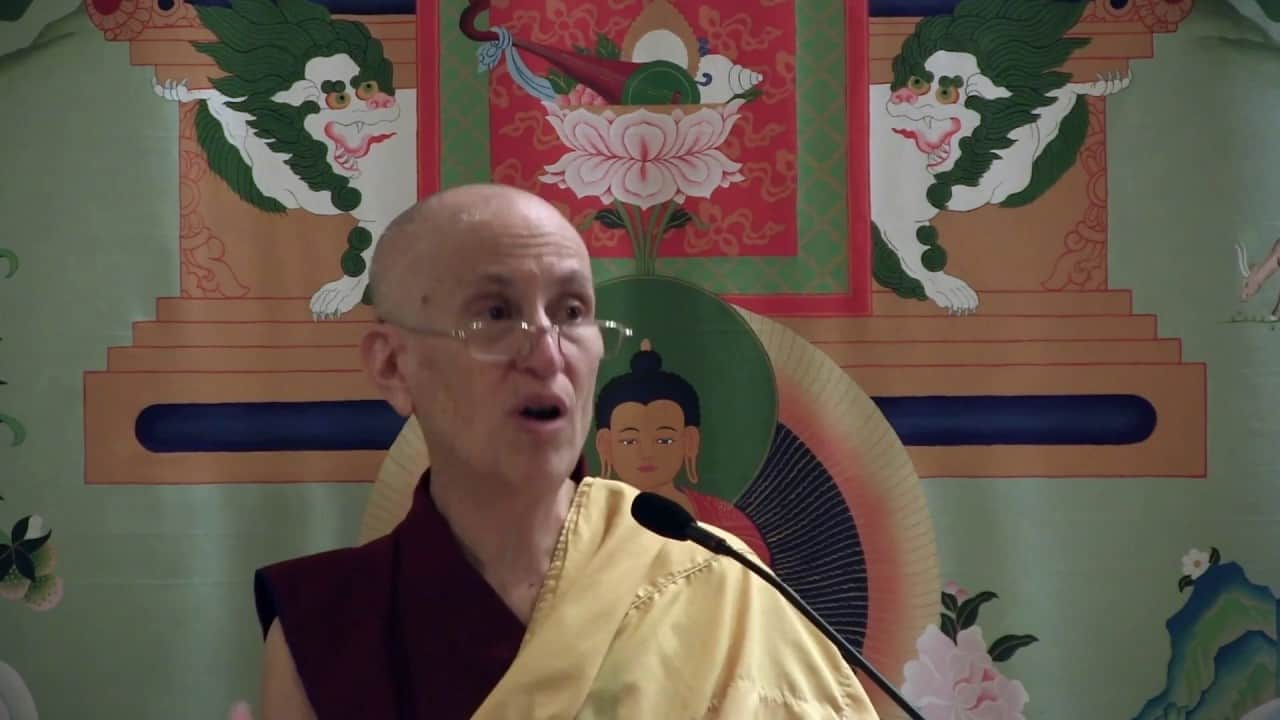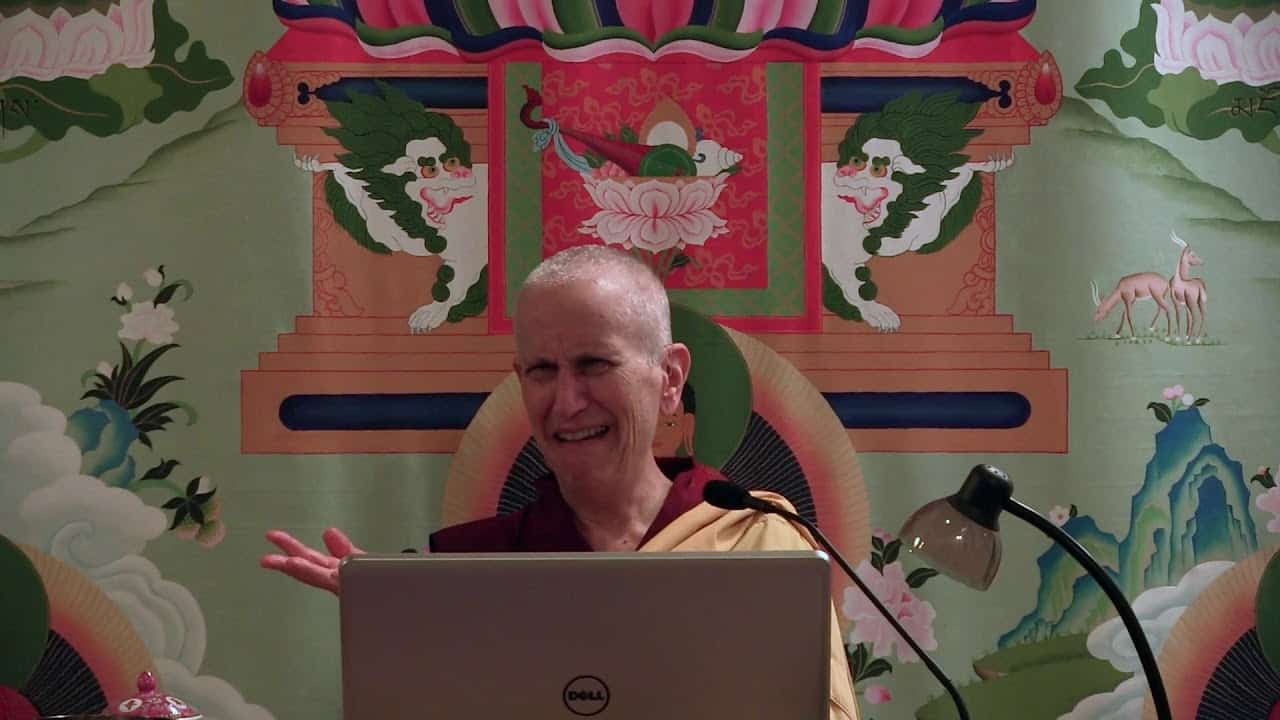Realizing selflessness
The text turns to training the mind on the stages of the path of advanced level practitioners. Part of a series of teachings on the Gomchen Lamrim by Gomchen Ngawang Drakpa. Visit Gomchen Lamrim Study Guide for a full list of contemplation points for the series.
- Why do we need to realize selflessness?
- How realizing emptiness cuts the root of samsara
- What grasping at inherent existence does to our mind
- Recognizing distorted attention and rumination
- Casual sequence from self-grasping to the duhkha of samsara
Gomchen Lamrim 126: Realizing Selflessness (download)
Contemplation points
- Investigate 1) how when an object doesn’t coincide with your way of thinking anger arises, and 2) how when an object does coincide with your way of thinking, attachment arises. Make some personal examples from your own life. Consider that both these responses (anger and attachment) are the result of ignorance grasping at true existence being present in the mind.
- If ignorance is the root of samsara, why do you need to realize emptiness to overcome that ignorance?
- Consider the analogy of the knapweed that Venerable Chodron used in the teaching. How is picking a weed like eliminating the root of samsara in your mind?
- Consider the causal chain that fuels samsara: grasping at true existence gives rise to distorted attention which exaggerates the good or bad qualities of an object, which gives rise to afflictions, which gives rise to action/karma, which leads to all the results of the dukkha of samsara. Think through each step and why one leads to another. Why, when ignorance is removed does the entire chain crumble?
- Consider the analogy of seeing a face in the mirror. How is seeing the appearance of a face in a mirror similar to seeing the appearance of an inherently existent person? How does each appear? What is each dependent on? How can you use this analogy to start chipping away at ignorance in your own mind?
Venerable Thubten Chodron
Venerable Chodron emphasizes the practical application of Buddha’s teachings in our daily lives and is especially skilled at explaining them in ways easily understood and practiced by Westerners. She is well known for her warm, humorous, and lucid teachings. She was ordained as a Buddhist nun in 1977 by Kyabje Ling Rinpoche in Dharamsala, India, and in 1986 she received bhikshuni (full) ordination in Taiwan. Read her full bio.


